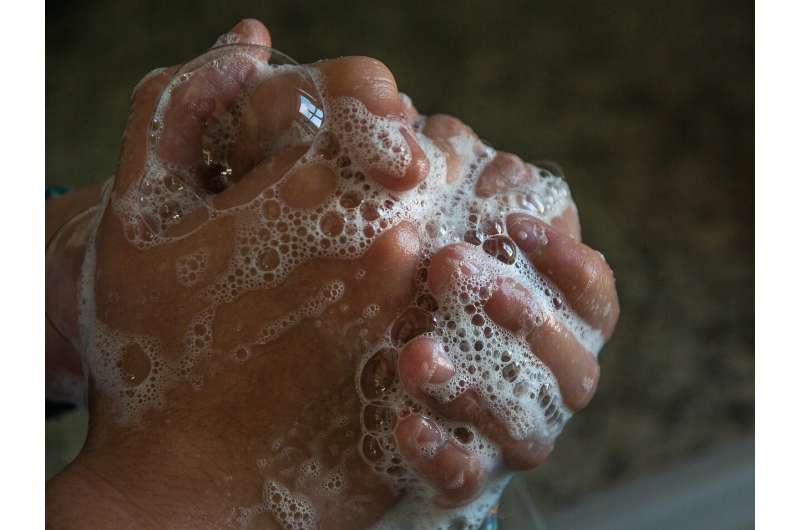
It’s a worst-case scenario in health care: A patient undergoes life-saving surgery and is sent home to recover, only to return to hospital later with a surgical site infection.
Such infections affect between 26,000 and 65,000 Canadians each year, and are the leading cause of unplanned hospital readmissions, driving patient complications—even deaths—and increasing both health-care system costs and antimicrobial resistance, according to the Government of Canada.
“Preventing surgical site infections starts at the scrub sink,” says surgeon-scientist and University of Alberta professor Rachel Khadaroo, whose new instructional video on sterile hand technique has just been made available to surgeons, medical trainees and surgical teams around the world by the New England Journal of Medicine.
“I want it to be embedded in surgery teams’ knowledge that surgical site infections are detrimental and harmful to our patients,” says Khadaroo, who is interim scientific director of Alberta Health Services’ Surgery Strategic Clinical Network and a long-standing member of the international Surgical Infection Society. “That is our foundation and the motivation for learning proper surgical scrub technique.”
It’s not just a matter of washing your hands well. It’s a two- to 10-minute systematic routine of scrubbing the fingernails and cleaning the hands and forearms thoroughly with antimicrobial soap and water or with an alcohol-based gel, all with the goal of keeping germs from entering the patient in the operating room.
The video is the latest in the journal’s series of more than 100 Videos in Clinical Medicine aimed at an audience of training or working medical staff. Peer-reviewed just like the printed journal articles, the most popular episodes include how to put on personal protective equipment during the COVID-19 pandemic, how to drain an abscess and how to measure blood pressure.
“Appropriate scrub technique is the first step in preventing surgical site infections and is of major importance for your patients,” Khadaroo says in the video. “Proper scrub technique will decrease the number of pathogens on your hands and arms so that you can decrease the risk of spreading infection to your patients.”
The video builds on an earlier series of videos Khadaroo produced for University of Alberta students in 2017, which she followed up with a randomized controlled trial to test their effectiveness in teaching sterile surgical technique.
Results showed that students who reviewed the videos along with taking in-person training with a nurse educator had more knowledge and felt better prepared to use it than those who went through in-person training alone.
“Part of being fully trained is having the confidence that you can do it, so when our results showed that students preferred videos, had better knowledge retention and felt more confident to be able to go into the operating room, all of these things showed us that this was a really great way to use technology to benefit surgical education,” Khadaroo says.
Khadaroo says the most common mistakes made in sterile surgical preparation are cutting corners and not being systematic—or having never been trained properly in the first place. She hopes her expertise can now have an impact on surgical staff worldwide, particularly in developing countries or smaller Canadian hospitals that don’t have nurse educators. She looks forward to creating more videos for the New England Journal of Medicine on other hygiene topics.
More information:
Rachel G. Khadaroo et al, Water-Based and Waterless Surgical Scrub Techniques, New England Journal of Medicine (2023). DOI: 10.1056/NEJMvcm1807798
Journal information:
New England Journal of Medicine
Source: Read Full Article


